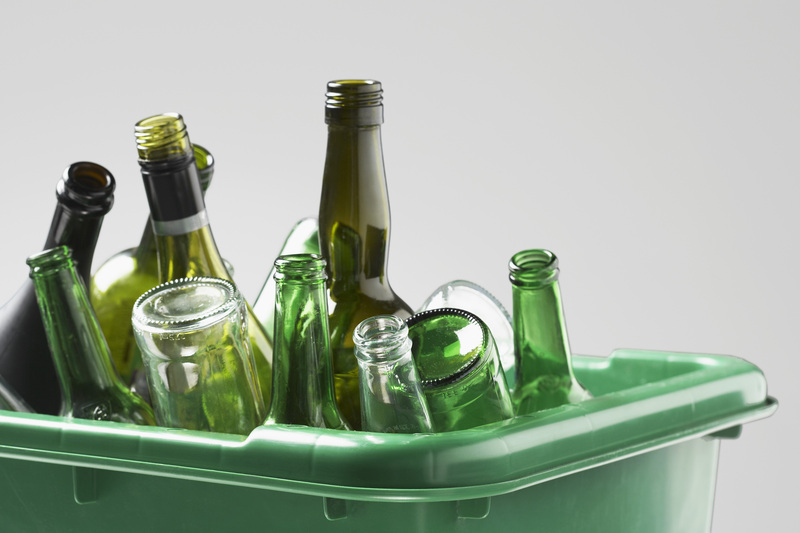Categorizing Waste: What Makes It Hazardous?
When it comes to protecting both the environment and public health, categorizing waste is crucial. Not all waste is created equal, and understanding what makes waste hazardous helps organizations, governments, and individuals take proper steps for disposal. In this comprehensive article, we'll delve into the essentials of waste categorization with a focus on hazardous waste--examining its definitions, key characteristics, categorization systems, and why it matters.
Understanding Waste Categorization
Proper waste categorization separates common municipal waste from specialized types like hazardous, biomedical, electronic, and industrial waste. This process helps ensure that each type of waste receives the right handling and disposal, minimizing risks to people and ecosystems.
Why Categorize Waste?
- Protects human health from pollutants and toxins
- Prevents environmental contamination
- Enables proper waste treatment and recycling
- Ensures regulatory compliance and avoids penalties
The waste hierarchy encourages minimizing, reusing, recycling, and safely disposing of waste. However, hazardous waste requires extra attention due to its potential to cause harm. So, what exactly makes waste hazardous?

Defining Hazardous Waste
Hazardous waste is any discarded material or byproduct that can pose a significant risk to human health or the environment. These materials come from industrial, residential, commercial, and even medical settings. Regulatory agencies like the Environmental Protection Agency (EPA) in the United States and the European Union define hazardous waste based on certain criteria--primarily their chemical composition and characteristics.
Main Characteristics of Hazardous Waste
Waste is typically deemed hazardous if it exhibits one or more of the following characteristics:
- Ignitability: Can easily catch fire under normal conditions (examples: solvents, paints).
- Corrosivity: Can corrode metals or destroy living tissue (examples: strong acids, alkaline cleaners).
- Reactivity: Can cause explosions, release toxic gases, or react violently (examples: peroxides, cyanides, explosives).
- Toxicity: Contains poisonous substances that can leach into the environment (examples: heavy metals, pesticides).
Types of Hazardous Waste
Hazardous waste can be classified through different lenses, including origin, chemical makeup, and physical form. Understanding these categories is vital for ensuring proper waste management.
Based on Origin
- Industrial Hazardous Waste: Generated from the manufacturing sector, such as unused chemicals or process residues.
- Household Hazardous Waste (HHW): Items like batteries, fluorescent bulbs, paint, and cleaners from homes.
- Medical/Biomedical Waste: Generated in healthcare facilities, including contaminated sharps, pharmaceuticals, and biological materials.
- E-waste: Discarded electronic devices containing hazardous substances like lead, mercury, and cadmium.
Based on Chemical and Physical Form
- Solid: Used batteries, expired medicines, contaminated packaging.
- Liquid: Solvents, waste oils, laboratory chemicals.
- Gaseous: Toxic gases released from manufacturing or laboratory processes.
Regulatory Systems for Categorizing Hazardous Waste
Various governmental agencies have developed systems to classify and regulate hazardous waste. Two of the most influential are:
The EPA's RCRA System (USA)
- Listed Wastes: Specifically identified wastes from common manufacturing processes, such as F-list, K-list, P-list, and U-list.
- Characteristic Wastes: Identified based on ignitability, corrosivity, reactivity, or toxicity.
The European Union Waste Framework
- Categorizes wastes using the European Waste Catalogue (EWC) and Hazard Statement Codes (e.g., H1: explosive, H6: toxic).
- Employs a "waste code" system for tracking and safe disposal.
Regardless of the system, the intent is the same: to ensure safe handling, tracking, storage, and disposal of substances that pose unique hazards.
What Puts Waste Into Hazardous Categories?
Not every seemingly dangerous material is classified as hazardous. Let's break down the factors that officially make waste hazardous:
1. Chemical Composition
The presence of heavy metals (lead, mercury, arsenic), persistent organic pollutants (PCBs, dioxins), solvents, acids, and other dangerous chemicals significantly contribute to a waste being labeled hazardous.
2. Physical Properties
- Liquids may pose leak risks and spread quickly.
- Finely divided powders may be easily inhaled.
- Volatile substances may emit hazardous fumes.
3. Quantity and Concentration
- Small quantities may be regulated if highly potent, while larger diluted wastes might escape regulation unless thresholds are exceeded.
- Regulators often use tests like the Toxicity Characteristic Leaching Procedure (TCLP) to assess environmental risk.
4. Source or Process of Generation
Waste directly from specified industrial or manufacturing processes may be automatically classified as hazardous, regardless of the specific hazardous characteristic.
Typical Examples of Hazardous Waste
- Paints and Solvents: Found in many homes and businesses, containing volatile organic compounds (VOCs) and heavy metals.
- Pesticides: Both household and agricultural chemicals that are toxic to humans and wildlife.
- Batteries: Especially those containing lead, cadmium, or mercury.
- Medical Waste: Sharps, contaminated dressings, prescription drugs, and laboratory cultures.
- Fluorescent Lamps: Contain mercury vapor, dangerous if broken and inhaled.
- Industrial Byproducts: Sludges, spent catalysts, oil residues, and chemical intermediates.
Environmental and Human Health Impacts
Improperly managed hazardous waste can lead to a variety of environmental and public health issues:
- Soil and groundwater contamination from leachates and spills
- Air pollution from toxic vapors and incineration of unsuitable materials
- Acute poisoning and chronic diseases in humans (cancer, neurological disorders)
- Damage to aquatic life via runoff into rivers and oceans
Proper categorization prevents these outcomes by guiding safe containment, treatment, and disposal.
Managing Hazardous Waste: Best Practices
Once hazardous waste is correctly categorized, management protocols help ensure public and environmental safety. Here are key steps:
1. Segregation at Source
- Separate hazardous from non-hazardous waste immediately.
- Preferably use color codes or specific containers.
2. Safe Storage
- Use leak-proof, clearly labeled containers.
- Store waste in well-ventilated, secure, and restricted areas.
- Avoid incompatible materials being stored together.
3. Proper Transportation
- Follow local and national hazardous materials shipping regulations.
- Employ certified transporters and maintain accurate manifests.
4. Specialized Treatment and Disposal
- Use technologies like incineration, chemical neutralization, or encapsulation.
- Landfilling only as a last resort and with engineered barriers.
- Recycle or reclaim whenever possible to reduce hazardous outputs.

Modern Trends in Hazardous Waste Categorization
As our knowledge grows, so does the need for evolving categorization systems. Emerging pollutants such as nanomaterials, pharmaceuticals, and new industrial chemicals require updated frameworks.
- Improved detection methods now identify hazards at even lower concentrations.
- Lifecycle analysis is used to assess total environmental impact, not just immediate toxicity.
- Global harmonization efforts (such as the UN's Globally Harmonized System, or GHS) help streamline classifications across borders.
Conclusion: Why Proper Classification Matters
Categorizing waste is more than a bureaucratic hurdle--it's an essential practice for safeguarding lives and nature. Proper hazardous waste classification ensures:
- Risks to human health and the environment are minimized
- Valuable resources can be reclaimed or recycled safely
- Regulatory compliance is maintained, avoiding fines and penalties
- The public is educated and empowered to dispose of hazardous materials correctly
As we continue advancing in technology and consumption patterns, understanding what makes waste hazardous remains a top priority. Knowledge, vigilance, and responsible action--these are our best tools for creating a healthier, safer planet, one waste stream at a time.
Remember: When in doubt about a specific waste, always consult your local environmental agency or hazardous waste disposal service for guidance. Proper categorization and handling are everyone's responsibility.